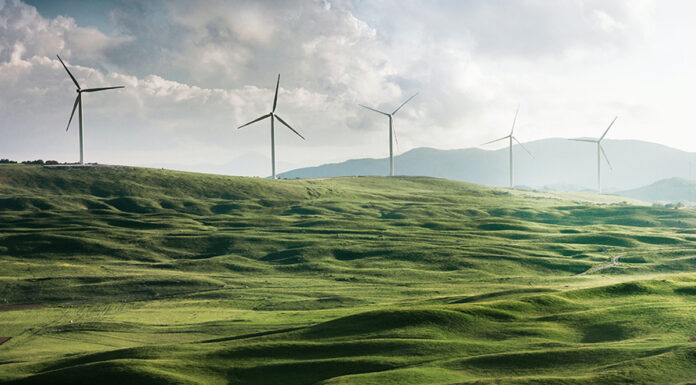As time goes by, the demand for electricity increases that leads to an increased dependency on fossil fuels as well. The over usage of fossil fuels contributes to the endless emission of carbon dioxide that leads to global warming. Preventing the further destruction of the environment by lessening activities that involve the usage of fossil fuels is the main goal of green technology.
Geothermal is another form of renewable energy. There have been a lot of researches about its potential role to be a sustainable source of energy. Since the heat energy can be found anywhere, why does this renewable energy is not yet widely used? What are the pros and cons of geothermal energy?
Geothermal Energy as Sustainable Source of Energy
Different industries are now shifting into geothermal energy to sustain their production. The heat from the Earth is generated in the core that is why it is unlimited. Not all countries are successful in generating electricity through this renewable energy. Countries located in tectonic areas such as the United States, Mexico, Indonesia, and the Philippines can shift efficiently into geothermal as a source of energy.
To utilize this renewable energy, wells are deeply dug up to the underground reservoir to have access to the hot water and steam. There are different ways by which the water and steam are converted into energy. The use of geothermal energy is expensive compared to the use of fossil fuels. In the long run, this renewable energy provides many benefits.
Types of Geothermal Power Plants
Hydrothermal fluids are converted into energy into three different ways: binary cycle, flash steam, and dry steam. The type of geothermal energy that is used depends on the state of fluid and the temperature being converted.
Binary Cycle Plants
This is the commonly used type of geothermal power plant. What’s good about this type is that it can make use of lower temperature water. It utilizes a secondary loop, that is why it is called “binary” that contains fluid with a low boiling point.
Binary cycle power plants transfer the heat from geothermal hot water to another liquid. The heat causes the second liquid to turn to steam, which is used to drive a generator turbine.
Dry Steam Power Plant
As the name implies, it makes use of hydrothermal fluid that is steamed. This steam travels into a turbine that can drive a generator to produce electricity. The dry steam power plant is the very first type of geothermal power that operated. A steam power plant has a generator, a steam turbine, and a boiler.
The steam is generated in the boiler at a high temperature and high pressure. The steam generated converts heat energy into mechanical energy into the steam turbine. Then, the mechanical energy that is converted into the generator is converted into electric power.
Flash Cycle Steam Plants
The idea of this type of geothermal energy is that it makes use of high pressure and high-quality water with over 180°C. As the water streams, it can drive the generator turbines. It is cycle steam because when the steam cools, it goes back to water then absorbed back into the ground.
Uses of Geothermal Energy
Direct Use
The heat and steam from geothermal reservoirs can be used directly. The example of this is hot springs where you can use it for cleaning and bathing. Nowadays, the geothermal hot water is directly used for warming fishing farms, pasteurize milk, grow plants in greenhouses, etc.
Power Generation
Geothermal can be used to produce power by driving turbines through hot water and steam to produce electricity. The geothermal power plants are classified into three types such as dry steam power plant, flash steam power plant, and the binary power plant.
Ground source heating and cooling
The geothermal energy doesn’t fluctuate that is why it has both heating and cooling systems. The insulating properties of the Earth make it possible to deliver heat and cool energy. When the geothermal heat is converted into the energy it does not only heats the house during the winter but it can also be used as a cooling agent during the winter season.
Pros of Geothermal Energy
- Geothermal energy will never run out since it is both sustainable and renewable. It is said that geothermal reservoirs last longer than limited fossil fuels.
- It is easily accessible all year long because it is not dependent on the presence of sun and wind, unlike wind, solar, and biomass energy.
- The use of geothermal energy is environmentally friendly because there are no emissions released compared to the utilization of fossil fuels.
- Carbon footprints released in power plants is minimal.
- Does not create noise pollution. Unlike the traditional heating and cooling systems that can be irritating to hear, the geothermal system works just like a refrigerator that can operate quietly.
Disadvantages of Geothermal Energy
- The use of geothermal energy is more efficient in areas along tectonic fault lines so it has geographical limitations.
- When geothermal energy is extracted from the ground, there are greenhouses gases that are released. These gases are methane, hydrogen sulfide, ammonia, and boron. The amount of these gases released is still lower compared to the number of harmful gases emitted through fossil fuels.
- Its use has been linked to seismic instability.
Final Thoughts
Among the renewable energies, the geothermal heat is one of the most efficient because it can be accessed immediately. It is a clean source of energy that can be safely used in different industries. When there is a shift in sustainable energy through geothermal heat, it will create less impact on the environment and different industries will save more resources.










